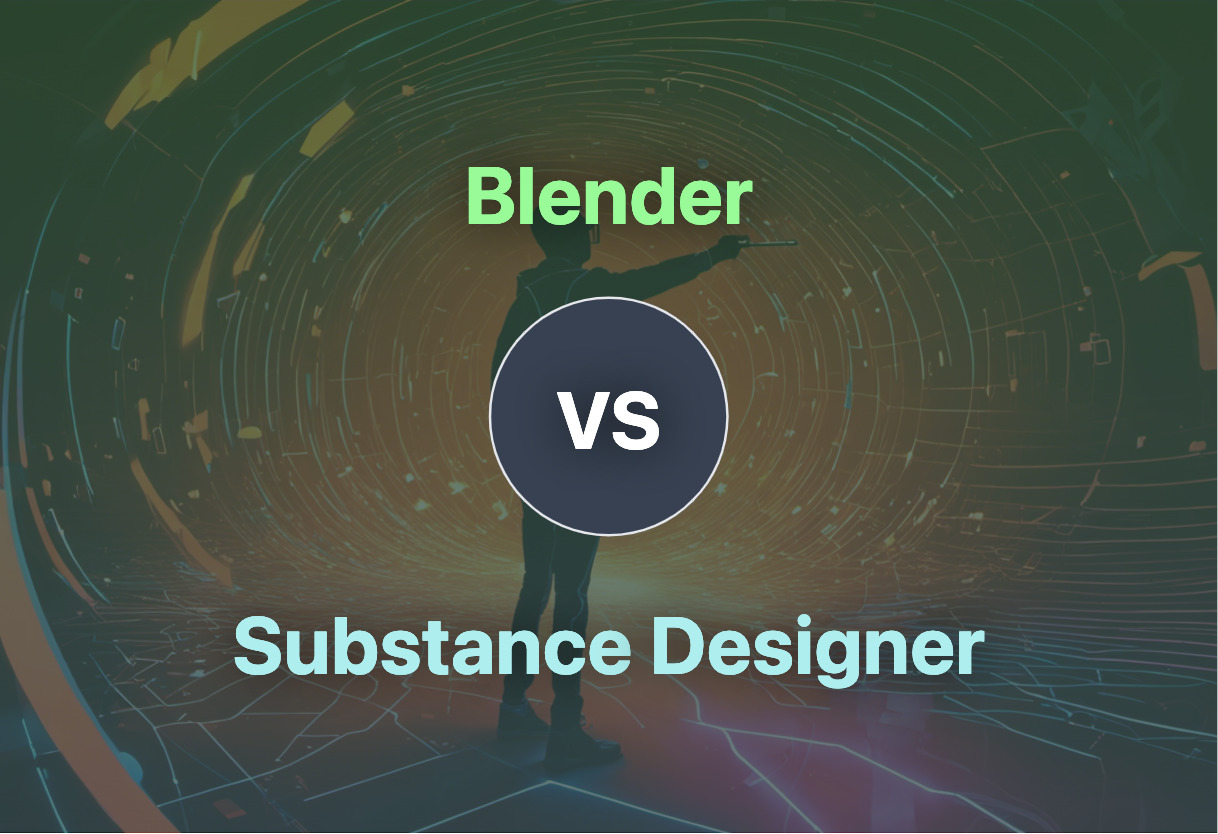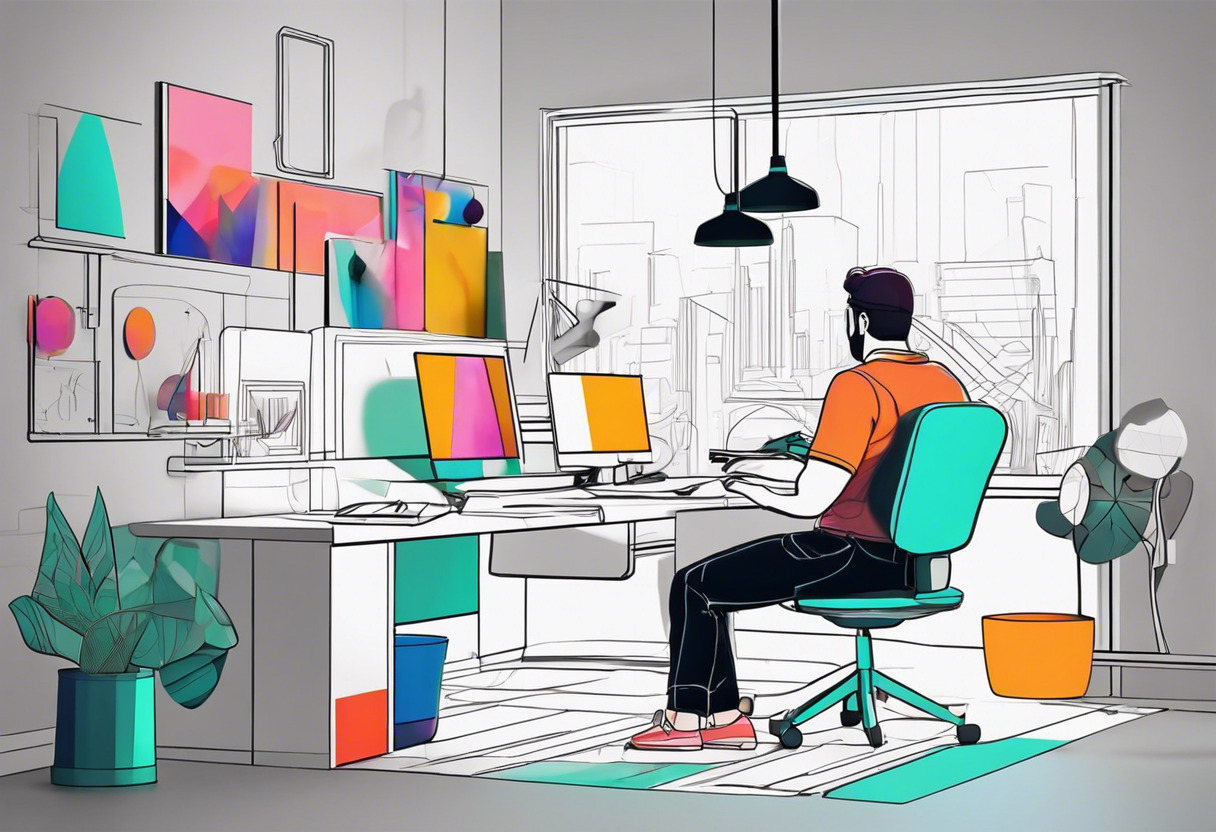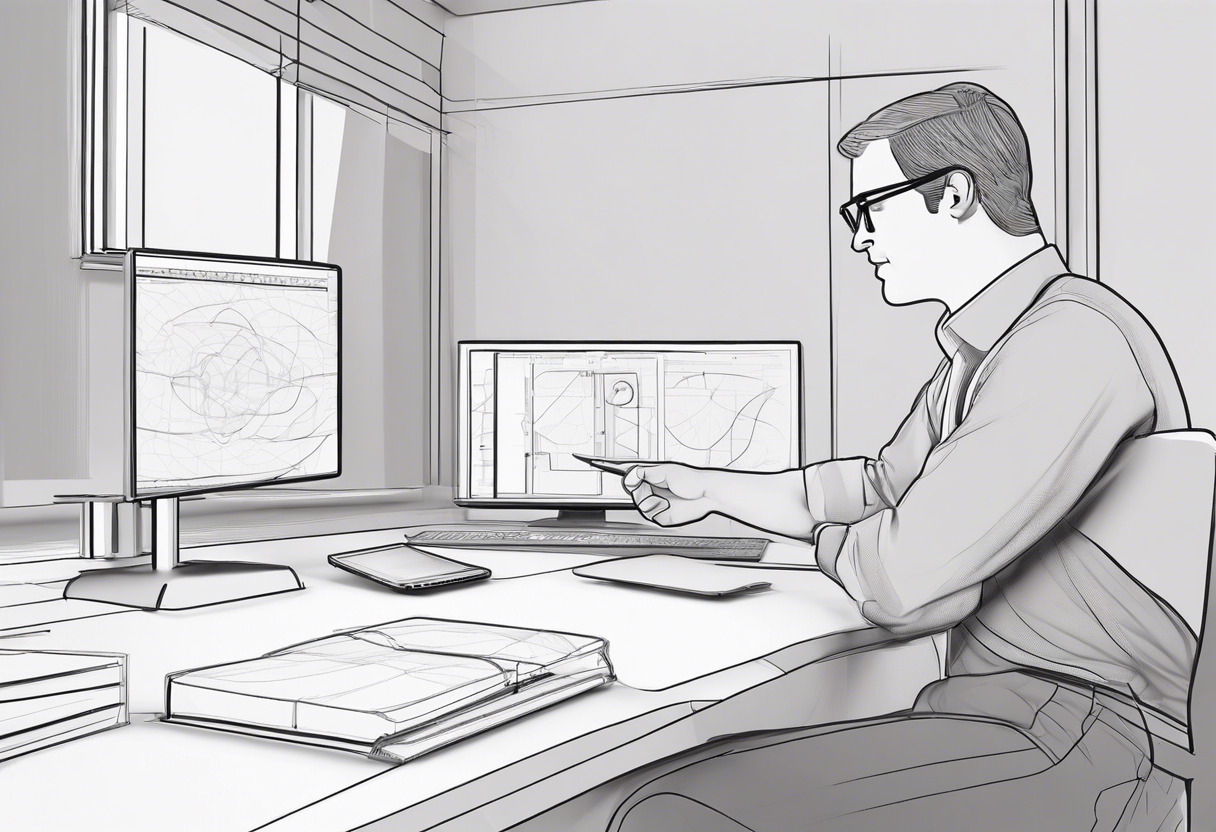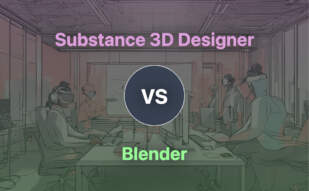For comprehensive 3D creation, Blender’s variety of free tools beats Substance Designer’s focus on material-authoring. Independent creators and small studios will prefer Blender for cost-effectiveness. However, highly specialized texture creators or pro game developers might opt for Substance Designer.

Key Differences Between Blender and Substance Designer
- Blender is a free and open-source 3D creation suite, while Substance Designer carries varying costs depending on licensing options.
- Blender is more all-encompassing with a plethora of features like 3D modelling, rendering, and more. Substance Designer focuses primarily on material-authoring.
- Blender supports a wider variety of 3D file formats, and Substance Designer offers deeper integration with Adobe’s Substance 3D Package.
- Community-driven Blender thrives on user contributions for development, while Substance Designer, being part of Adobe’s suite, has a more corporate approach.
| Comparison | Blender | Adobe Substance 3D Designer |
|---|---|---|
| Type of Software | 3D computer graphic toolset | Material-authoring software |
| Cost | Free and open-source | $19.99/month or $219.88/year via Adobe’s Substance 3D subscriptions |
| Use Case | Used for animated films, visual effects, art, motion graphics, VR and 3D applications | Used by 3D professionals and enthusiasts for digital painting & 3D texturing; Part of workflow in game and animation studios |
| Main Features | 3D modeling, animation, rendering, video editing, compositing | Spline tools, path tools, pattern creation, image warping control |
| Operating Systems | Linux, macOS, Windows, BSD, Haiku | Platform-dependent, minimum versions required |
| Size | 193–305 MiB | Specifications vary depending on platform |
| Languages | Available in 36 languages | Native French, Italian, Portuguese editions provided |
| File Formats | Supports various 3D file formats for import/export | Interoperable with various 3D software and supports a range of file formats |
| Popular Usage | Widely used in various industries including animation and gaming | Used in creating high-profile games |
| Community | Primarily developed by community; Blender Institute employs full-timers and freelancers | Part of Adobe’s vast product ecosystem and professional community |
| Updates | Regular updates and enhancements from the community and Blender Institute | Regular updates, free on Steam until end of 2023 |
What Is Blender and Who’s It For?
Blender is an open-source 3D computer graphics software toolset jam-packed with capabilities. From animated films to visual effects, 3D printing to virtual reality applications, Blender is an all-in-one solution for your creative endeavors. Originally released in 1994 by Dutch studio NeoGeo, Blender has weathered industry changes, bankruptcy, to emerge victorious under the non-profit Blender Foundation and has been primarily community-developed since 2002.
Blender is intended for creatives, hobbyists, and professionals alike. Consider it your go-to tool for animation, rendering, compositing, and pretty much anything else 3D graphics-related, all the way down to video editing and motion graphics.

Pros of Blender
- Free and open-source
- Comprehensive feature set covering everything from 3D modeling to video editing
- Strong community support and development
Cons of Blender
- Steep learning curve for beginners
- Depreciated Game Engine since 2.8 release
- Blender Internal removed in 2.80 release favoring Eevee renderer
What Is Adobe Substance 3D Designer and Who’s It For?
Adobe Substance 3D Designer is an advanced material-authoring software that empowers creative professionals to manipulate 2D shapes without complex node wiring. The new Spline and Path tools added in version 13.0 enable the creation of surface patterns and control over pattern scattering and image warping. Coupled with Substance Engine 9’s support for loop repetition, Adobe Substance 3D Designer is your dream tool for meticulous creation.
This software is designed for 3D professionals and enthusiasts, from AAA Game Developers to Indie talents, Feature Animation to Visual Effects studios. It’s also part of Adobe’s Substance 3D Package, which includes Substance Painter for applying textures/layers/paint on the materials created with Substance Designer. Both are best used in combination for peak performance.

Pros of Adobe Substance 3D Designer
- Intuitive toolset for 2D shape manipulation
- Powerful combination with Substance Painter for material creation and texturing
- Solid support and updates from Adobe
Cons of Adobe Substance 3D Designer
- License cost can be prohibitive for some users
- Discontinued procedural geometry toolset
- Requires a 64-bit processor and specific OS according to platform
Which Tool Triumphs: Blender or Substance Designer?
Unraveling the better fit between Blender and Substance Designer demands a precise understanding of the user’s objectives, skills, and character. Here’s an audience-centric verdict.
Indie Game Developers
Being open-source and offering a broad span of features, from 3D modelling to animation, Blender is remarkably potent for indie developers operating under budget constraints.

Professional Game Design Studios
For intricate textures and layering, Substance Designer‘s advanced customization options are unparalleled. The Substance Engine 9’s loop repetition, coupled with its seamless compatibility with Unreal Engine, makes it a titan tool for professionals.

Visual Effects Artists
When it comes to visual effects, the Blender, with its raster graphics editing, fluid and smoke simulation, certainly carries the day.

Graphic Hobbyists
Substance Designer, with its simple design flagging up Spline and Path tools, is excellent for hobbyists in search of an easy maneuver.

Design Educators
For educators, Blender’s extensive capabilities and open-source nature makes it a valuable tool for teaching a wide range of graphics-related skills.

Ultimately, go the Blender way if you need a cost-effective, multifunctional tool. Opt for Substance Designer when you aim for superior graphics and have room for expenditure. Your choice inexorably hinges on your project aims and financial elasticity.
Hannah Stewart
Content writer @ Aircada, tech enthusiast, metaverse explorer, and coffee addict. Weaving stories in digital realms.





